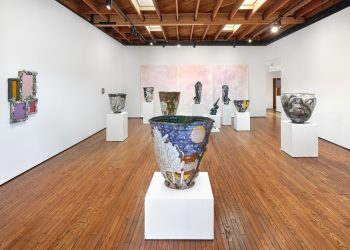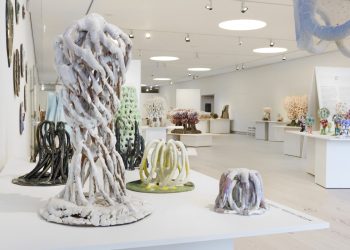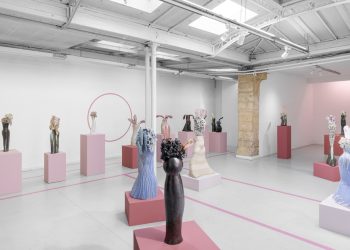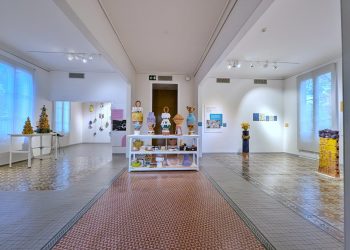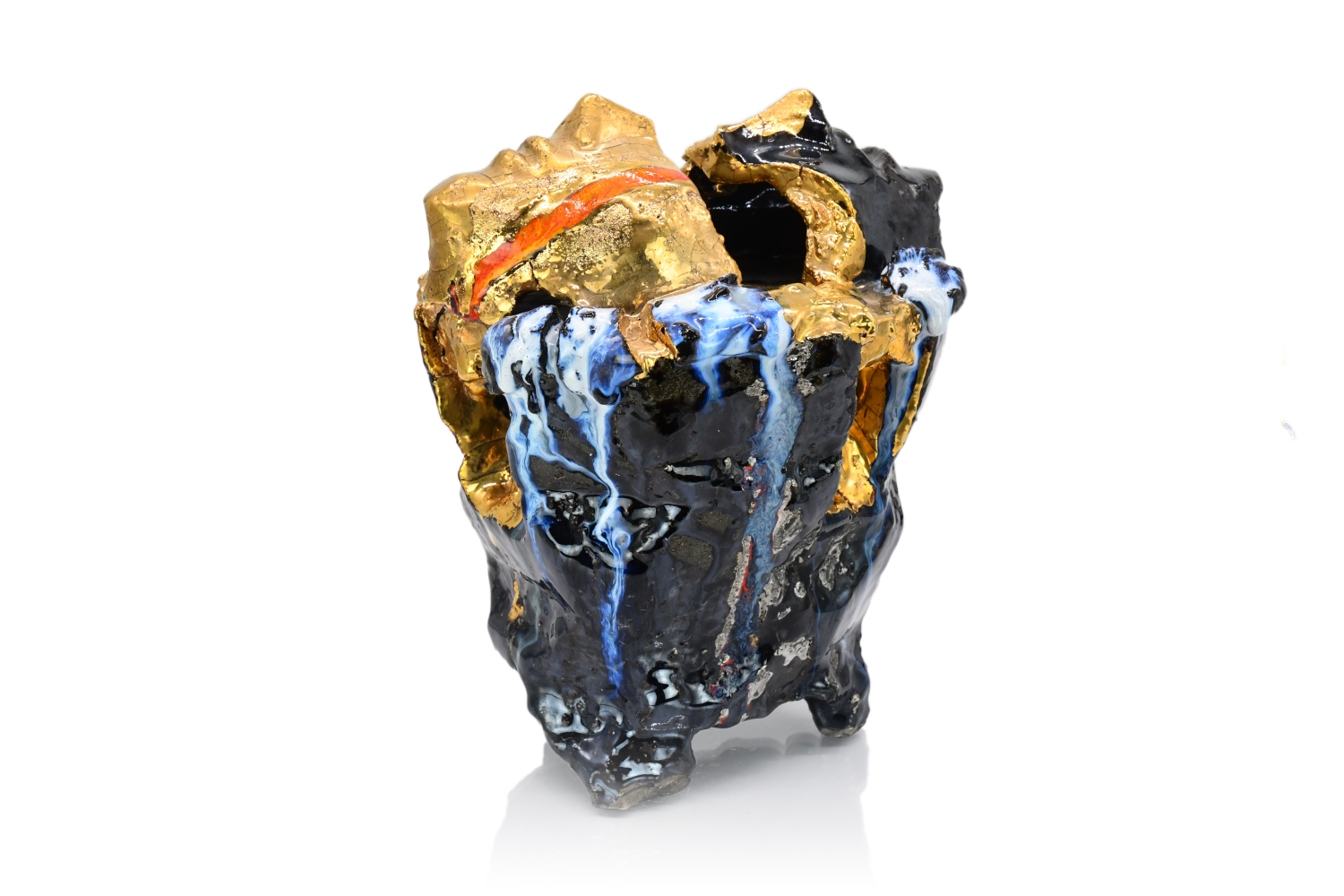
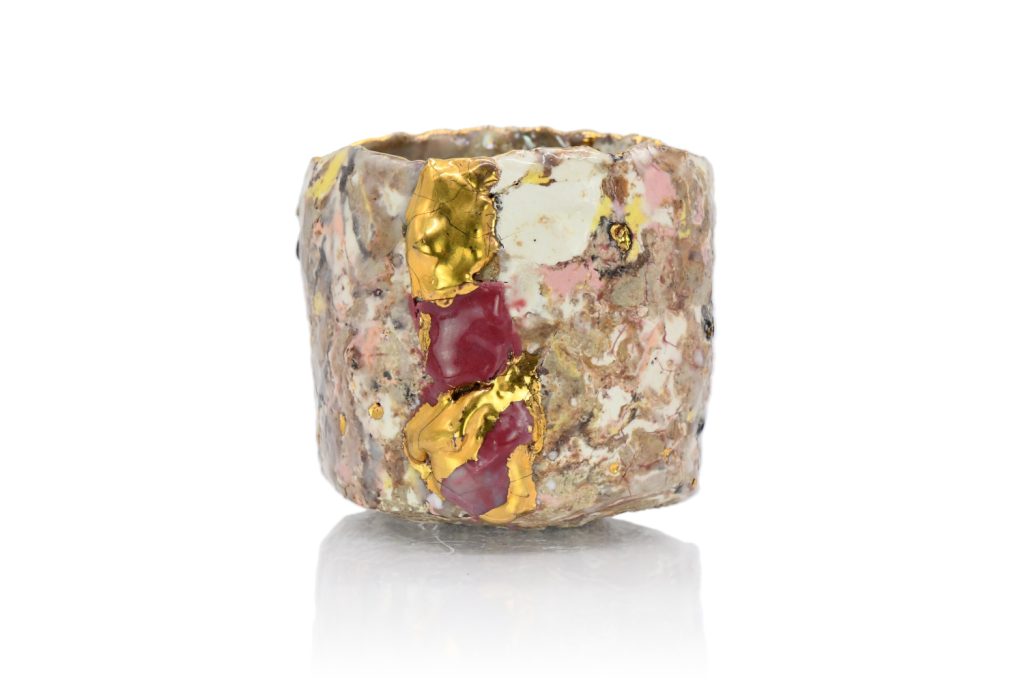
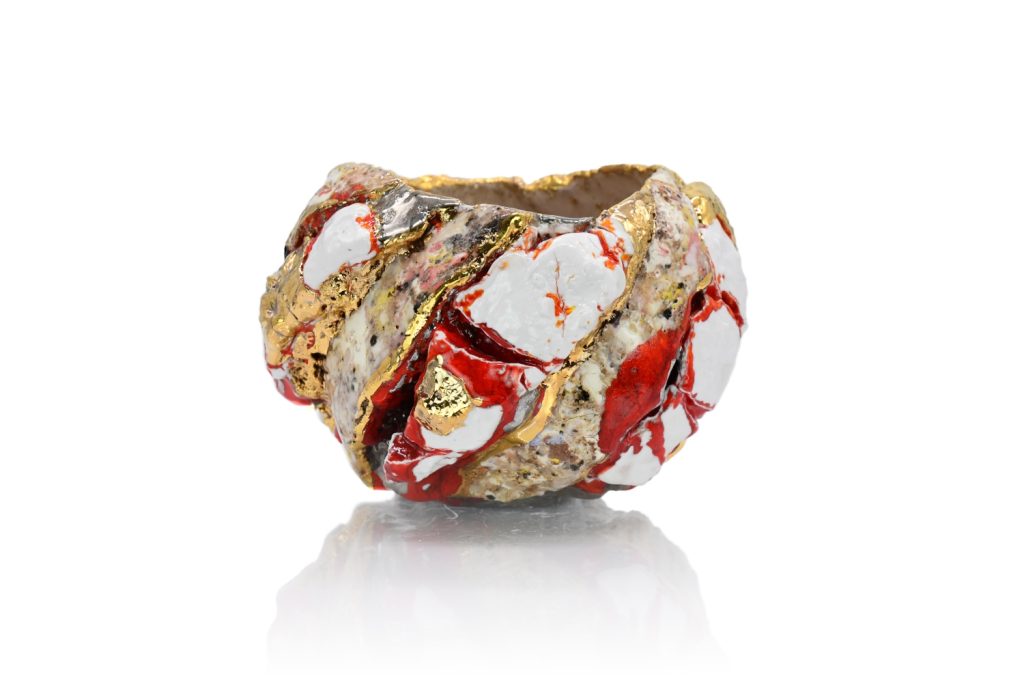
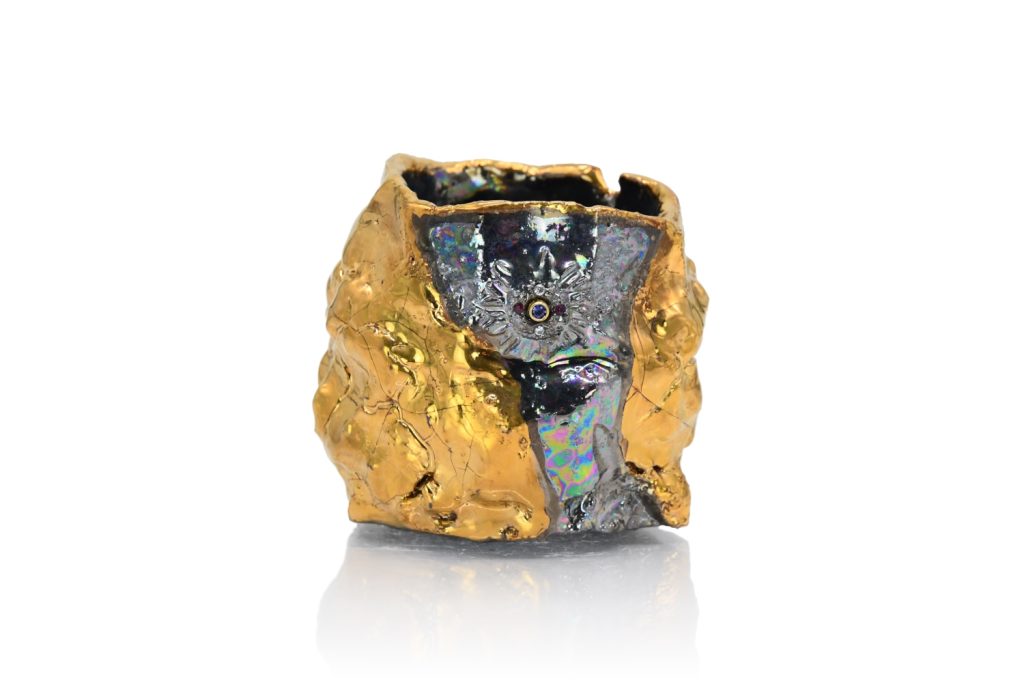
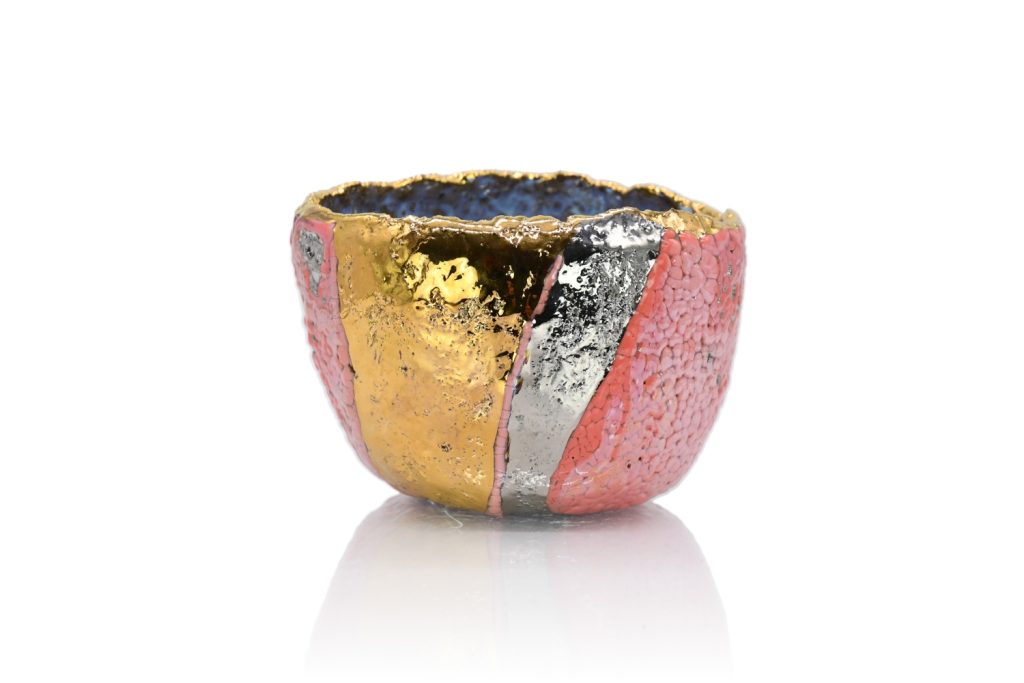
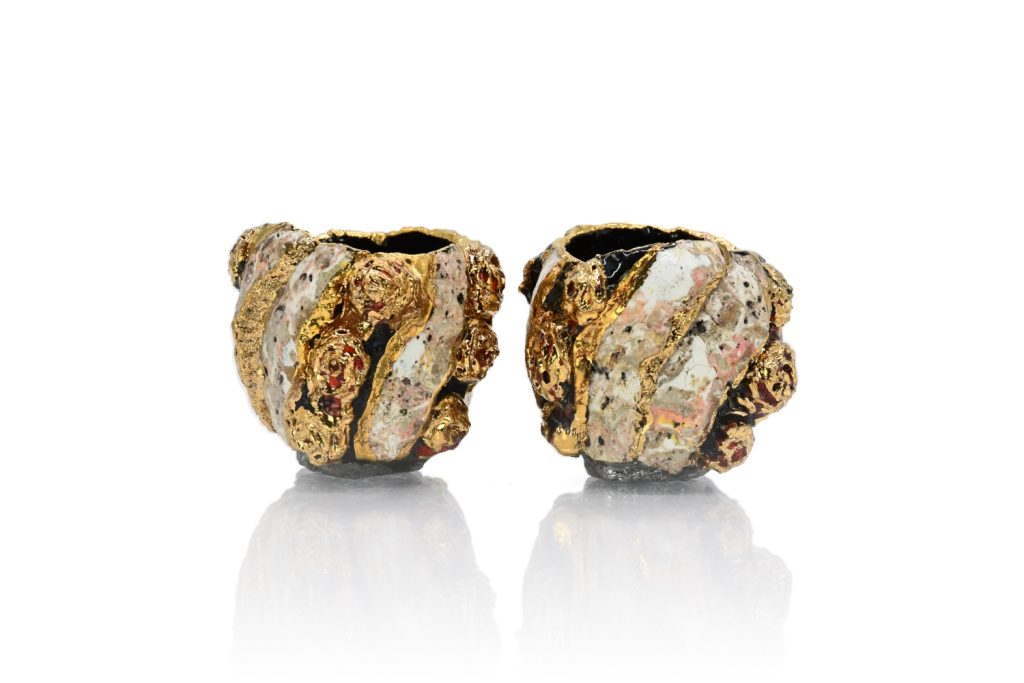
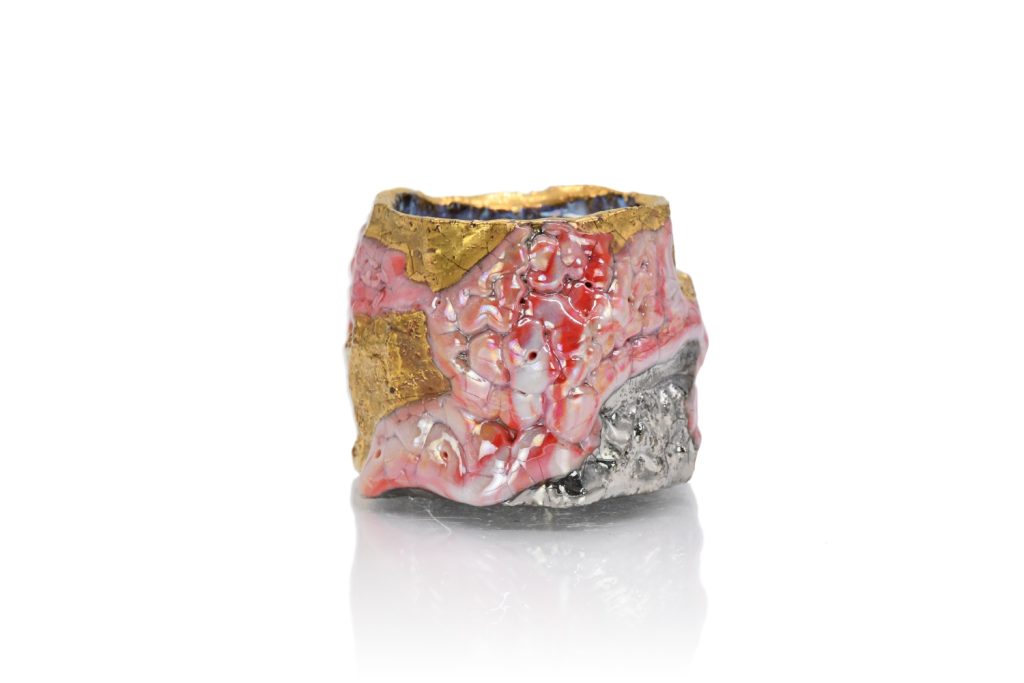
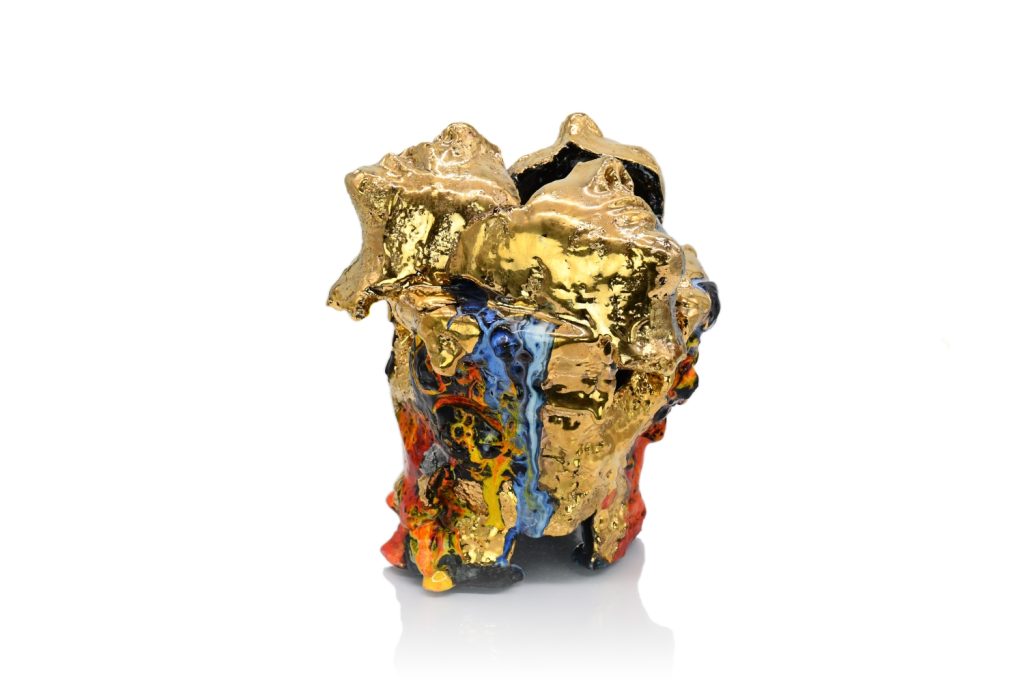
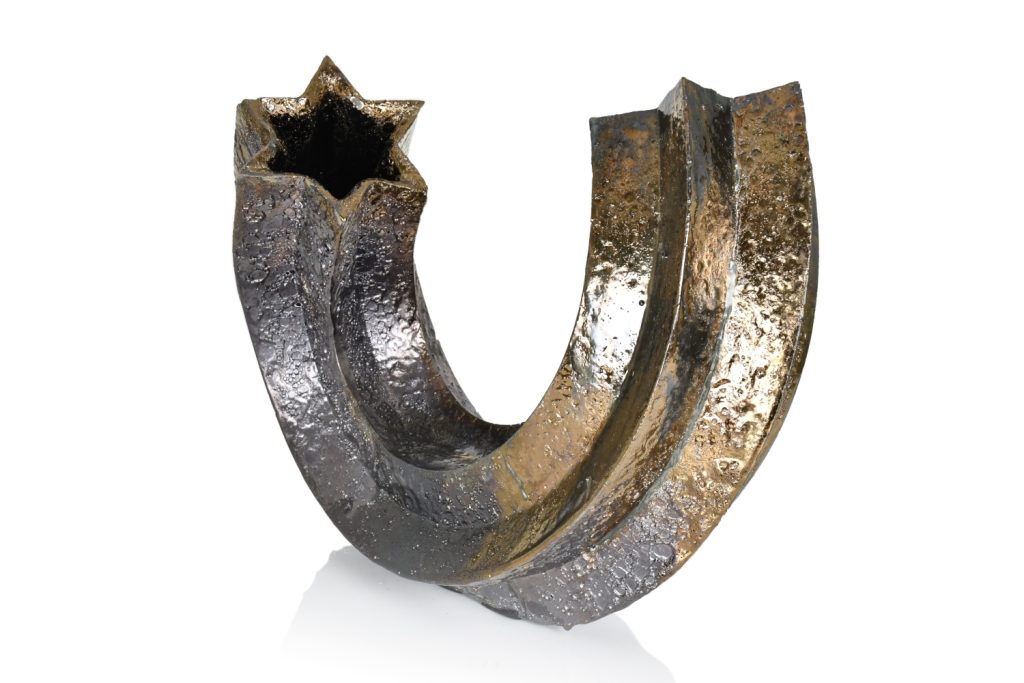
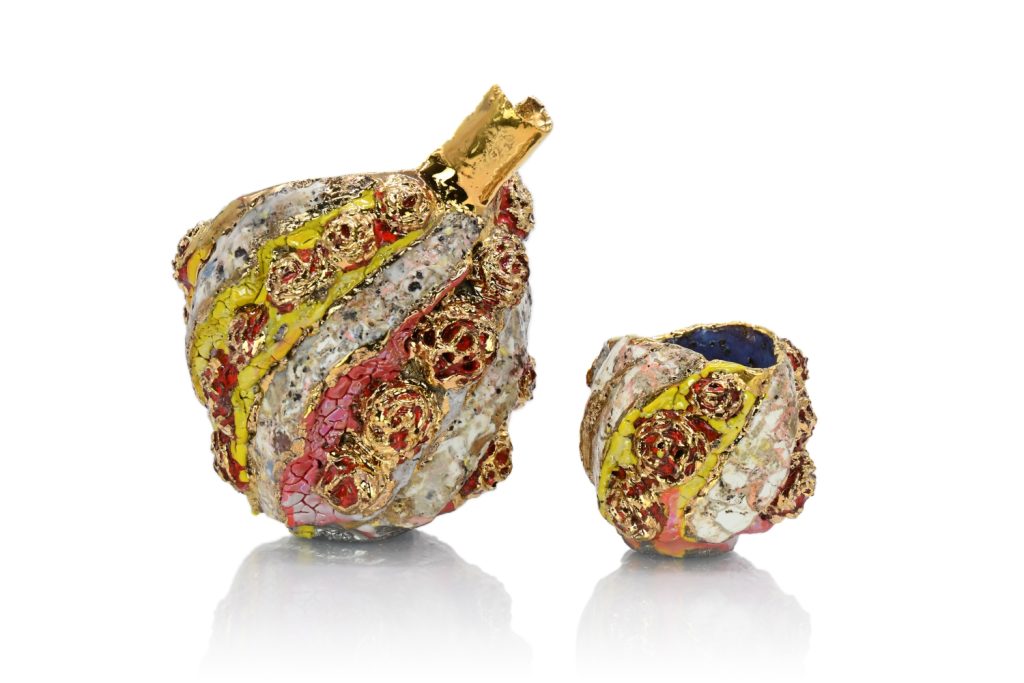
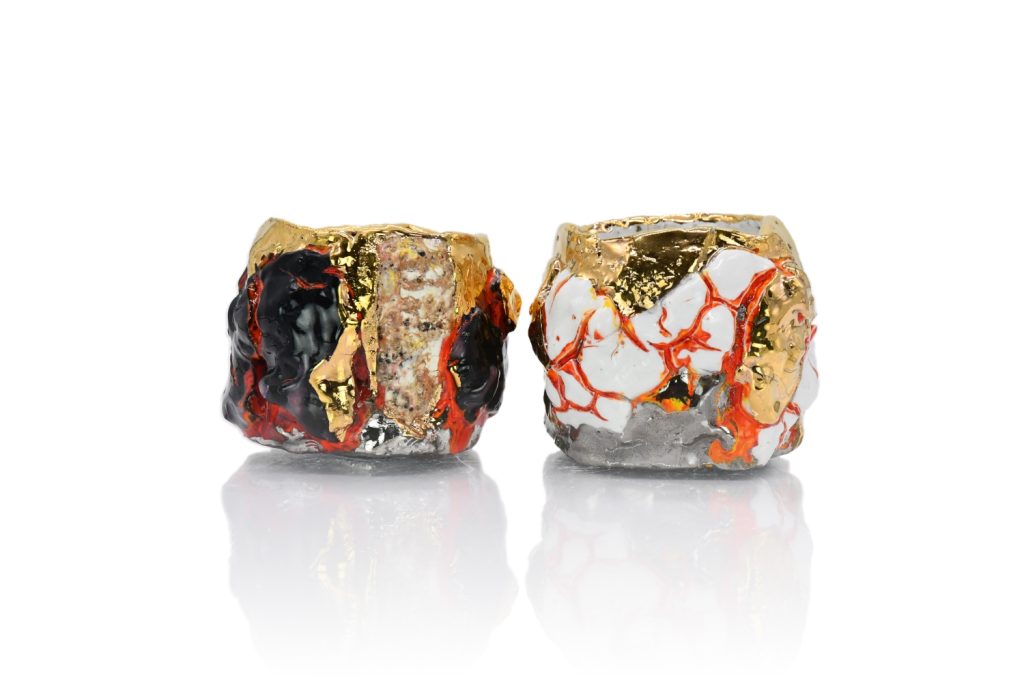
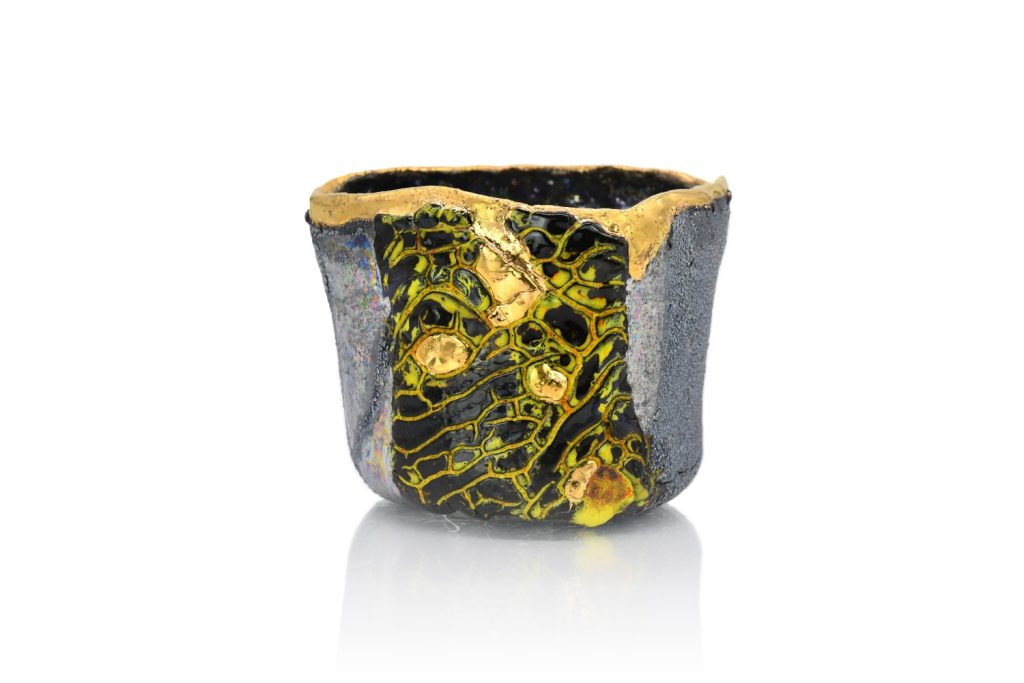
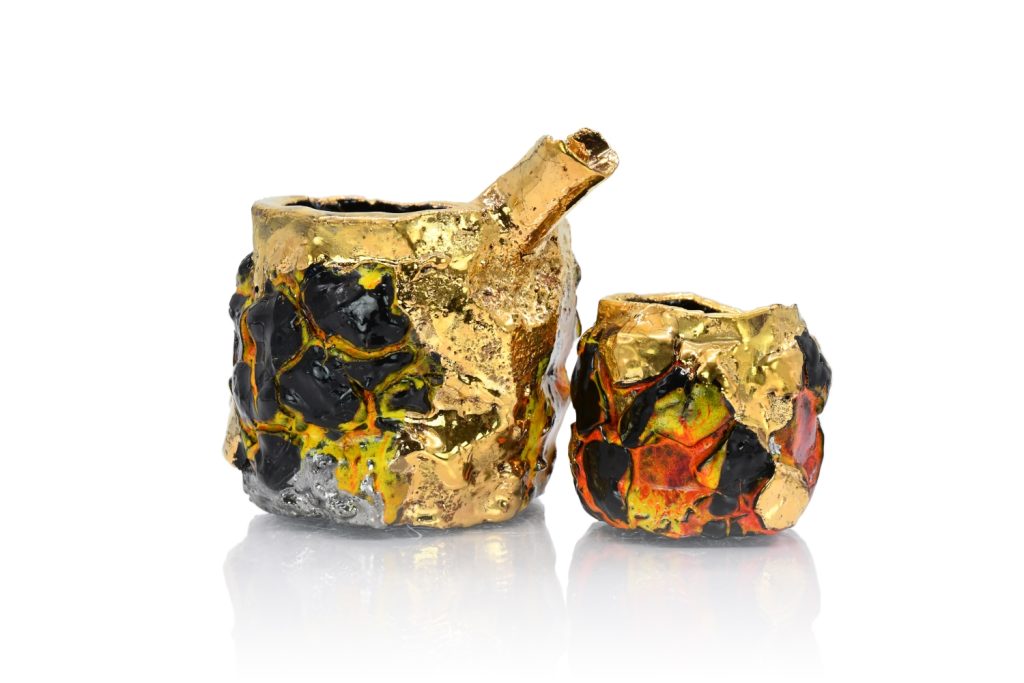
Toru Ichikawa: Inner Visions is on view at The Stratford Gallery in Broadway, Worcestershire
November 8-20, 2024
Last week Japanese ceramic artist Toru Ichikawa’s first solo exhibition in the United Kingdom opened at The Stratford Gallery. A show that was conceived over 4 years ago came to fruition showcasing the flamboyant, expressive and avant grade creations of the Bizen based artist. “Good things come to those who wait!”, comments gallery director Howard Clegg, “and we were more than happy to do so in order to stage this important show of his work here in the U.K. Ichikawa san is a force of nature manifesting in his huge self belief and, crucially, the ability to execute his visions. We are delighted to have worked with him to organise this exhibition providing visitors an unrivalled opportunity for close study of his work.”
Ichikawa spoke with Howard Clegg on the eve of his exhibition with the gallery; here is a link to the interview in which he discusses his early life, first encounter with clay and what guides him to create such avant-garde creations.
Essay by Howard Clegg, Director of The Stratford Gallery, November 2024
Toru Ichikawa was born in Tokyo in 1973. He grew up in a Tokyo ward that was heavily populated with nearby University students which seemed to give him a general awareness that learning was a very natural preoccupation. The bustle of Tokyo and energy of his early life surroundings formed a naturally inquisitive and interested young Ichikawa. He describes how he was fascinated by everything as a child and would self study many interests to satisfy his curiosity. Combined with his family’s movements around the entirety of Japan due to his father’s career, he built up a varied and outward looking appreciation of regional differences in people, culture and arts.
Ichikawa’s education would eventually lead him to have a portfolio career from his early twenties in a 90s Japan that was suffering significant economic recession. Working as a videographer and web designer he found an outlet for creativity but the corporate parameters of his client base left a void of possibility he unconsciously felt the need to fill. On a trip to his wife’s family home in Okayama Prefecture, aged 35, life would take a very different and radical turn for him.
Okayama Prefecture is home to the millennia old ceramic tradition known as Bizenyaki, centred around the pottery towns of Bizen and Inbe. It was in this region that his mother in law would suggest to Ichikawa that he might be interested in taking a pottery class as a an outlet for creative inspiration. Having never explored this discipline before, he thought “Why not?”. For Ichikawa everything changed the moment his hands touched the heavy, plastic clay of Bizen. Pushing his fingers into it he realised he was physically interacting with Japan’s ancient history, hundreds of thousands of years of buried life from his country’s islands. The accumulation of minerals. metals, silt and animal remains that were once at Japan’s surface now resided in his hands, untouched in countless centuries. A true lightening bolt moment for him, he realised that a greater force was at play within him and that his future life would involve working in clay.
Throwing himself into research on Okayama’s ceramic tradition he came across an exhibition catalogue featuring the striking angular shapes of toasted bizenyaki by Ryūichi Kakurezaki. So taken with the progressive Bizen master’s work Ichikawa knew immediately that if he was to progress to a place where he could realise his visions he would need to train under this master.
It is a great testament to his resolve, self belief and determination that he was brave enough to approach Kakurezaki directly over several visits to plead for consideration to become a disciple of his work and techniques. Already supporting two younger apprentices at the time, a deal was struck between Kakurezaki and Ichikawa that would see Ichikawa spend his first year clearing and maintaining Kakurezaki’s wildly overgrown garden! One must realise that Ichikawa was into the second half of his thirties at this point, giving up a career and salary to trust in his ability to achieve a future goal formed purely by visions of what could be. Whilst he was convinced of this future success, he tells me his wife took more convincing.
His first year was spent clearing overgrown trees and shrubs on Kakurezaki’s land; a brutal, manual task he set his alarm for every day at 6:21am. A child born on 21st June was proving in early middle age that he was humble enough to sacrifice everything for a chance to be guided by a master en route to realising his inner visions. Throughout the following years of working under Kakurezaki his alarm stayed set at 6:21am. First into the studio in the morning and last to leave. He would often work into the small hours getting home only to snatch a few hours of sleep before heading back to his duties. This drive and passion stood him in great stead and the sense of determination and humility he showed during this time saw him rapidly build on skills and aesthetic sensibilities guided by his sensei Kakurezaki.
Ichikawa describes his creativity as coming from a ‘higher master’ as if his visions are in themselves creative reincarnations from his country’s natural ancestors. He describes how shapes and decorative styles come fully formed to him in dreams and instantaneous apparitions as if a force is placing them purposefully in his mind’s eye. Colours, textures, profiles and proportions all appearing as one without the normal artistic practice of thinking, sketching, investigating and reiterating. A cynic might wonder how real these mental presentations are but it does offer us a beautiful and tempting explanation for his seemingly endless development of avant garde stylistic masterpieces. Known for not revisiting styles after successfully being realised and released creates a great burden for any artist. Who are we to say that the power to constantly invent the extraordinary and the new is not from a wider force? I prefer not to take the role of cynic when considering Ichikawa’s career and bodies of work. After all, here is a man that risked everything to manifest his inner visions and has achieved it with a staggering degree of success. May he be guided from his higher master for many decades to come.
The Inner Visions of Toru Ichikawa
The decorative styles of Ichikawa are as varied as they are spectacular. In this 48 page full colour style guide, gallery director Howard Clegg investigates the repertoire of styles included in Toru Ichikawa’s solo exhibition and their inspiration origins.
Contact
art@thestratfordgallery.co.uk
The Stratford Gallery
62 High Street,
Broadway,
Worcestershire, WR12 7DT
United Kingdom
Photos courtesy of the gallery




